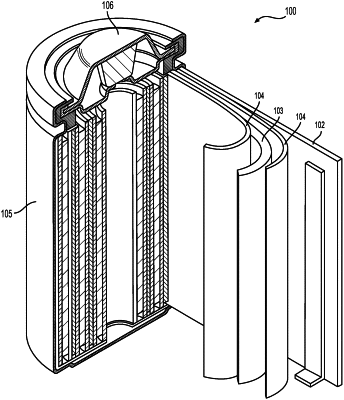| CPC H01M 4/134 (2013.01) [H01M 4/386 (2013.01); H01M 4/622 (2013.01); H01M 4/625 (2013.01); H01M 4/661 (2013.01); H01M 4/742 (2013.01); H01M 10/052 (2013.01); H01M 10/0525 (2013.01); H01M 2004/027 (2013.01)] | 24 Claims |

|
1. An anode electrode for a Li-ion battery cell, comprising:
a metal current collector; and
an electrode coating,
wherein the electrode coating:
(1) comprises Si-comprising active material particles that exhibit an average particle size in the range from about 0.2 microns to about 10 microns and exhibit a volume expansion in the range of about 8 vol. % to about 180 vol. % during one or more charge-discharge cycles of the Li-ion battery cell,
(2) exhibits an areal capacity loading in the range of about 3 mAh/cm2 to about 12 mAh/cm2,
(3) comprises conductive additive material particles, and
(4) comprises a polymer binder that is configured to bind the Si-comprising active material particles and the conductive additive material particles together to stabilize the anode electrode against the volume expansion during the one or more charge-discharge cycles of the Li-ion battery cell while maintaining an electrical connection between the metal current collector and the Si-comprising active material particles.
|